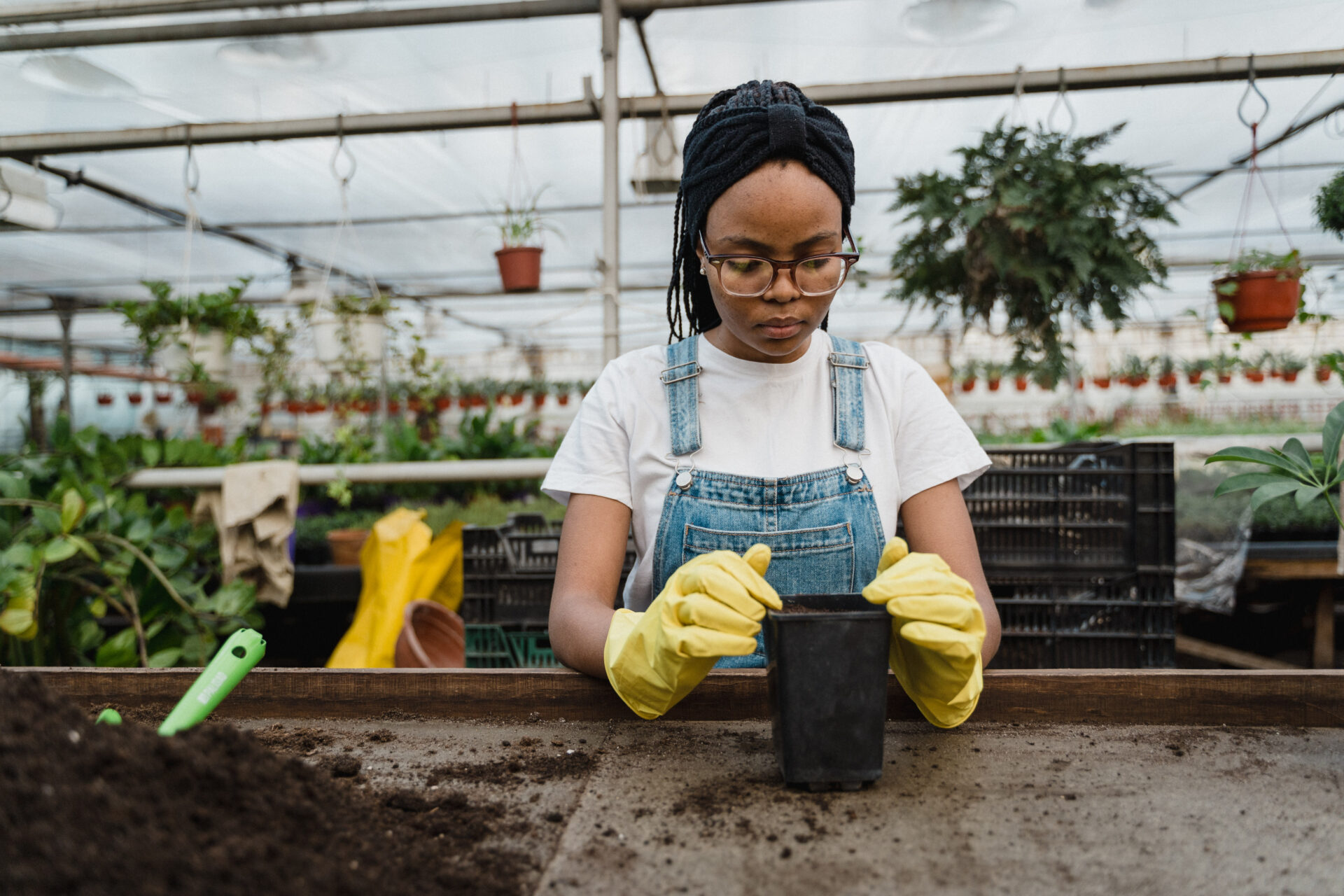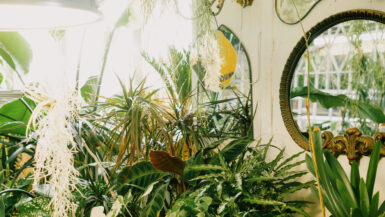Indoor vertical gardening has become increasingly popular as urban dwellers seek innovative and sustainable ways to grow their plants within the confines of limited space. In this article, we will explore the exciting world of indoor vertical gardens, focusing on how to create your thriving green haven on a budget.
We will discuss the essential elements for success, including selecting the right plants, proper lighting, and efficient irrigation systems. Furthermore, we will delve into various DIY and cost-effective solutions for constructing your very own vertical garden.
Following the guidelines presented in this comprehensive guide will enable you to embark on your indoor vertical gardening journey, fostering a healthier and more eco-friendly lifestyle.
Selecting Budget-Friendly Indoor Plants
When starting an indoor vertical garden on a budget, choosing affordable, low-maintenance, and well-suited plants for your indoor environment is crucial. This subsection will discuss selecting the best budget-friendly indoor plants for your vertical garden, ensuring that your green haven flourishes without breaking the bank. We will also explore some valuable resources and innovative systems to help you make informed decisions about plant selection.
Consider Your Indoor Environment
Before selecting plants for your vertical garden, consider the unique factors that might influence your plants’ growth, such as available light, temperature, and humidity within your living space. Choose plants that are well-adapted to these environmental conditions, as they will require less maintenance and are more likely to thrive.
Research Low-Cost Plant Options
Invest some time researching various low-cost plant options suitable for indoor vertical gardening. Plants such as pothos, spider plants, and ferns are affordable but also hardy and low-maintenance, making them ideal for beginners. Additionally, consider incorporating edible plants, such as herbs and leafy greens, to add variety and functionality to your vertical garden.
Propagate Your Plants
One cost-effective way to expand your plant collection is by propagating your plants from cuttings, seeds, or divisions. This saves you money and allows you to share and exchange plants with friends and fellow gardeners, fostering community and collaboration.
Explore Innovative Vertical Garden Systems
Consider exploring innovative indoor vertical garden systems and technologies to maximize your budget and ensure your plants’ success. These systems often support your plants, ensuring proper drainage, air circulation, and nutrient distribution. Some of these systems are also designed to be modular and easily expandable, allowing you to grow your vertical garden over time without significant additional investment.
By carefully selecting budget-friendly plants, considering your indoor environment, propagating your plants, and utilizing innovative vertical garden systems, you can create a thriving indoor vertical garden without spending a fortune. With some research and creativity, your indoor green oasis will become a reality, bringing health, well-being, and sustainability into your home.
Maximizing Space with Effective Plant Arrangement
This subsection will explore maximizing space in your indoor vertical garden using effective plant arrangement techniques. With careful planning and thoughtful design, you can maximize your limited indoor space while creating a lush and vibrant garden.
We will explore key concepts, such as layering, selecting plants with complementary growth habits, and utilizing containers and structures that optimize your vertical space. Implementing these strategies will make your indoor vertical garden look stunning and function efficiently.
Layering: The Key to Vertical Garden Success
Layering is a crucial technique when arranging plants in a vertical garden. By placing plants with different heights, textures, and growth habits together, you can create a visually appealing and dynamic display.
Start by positioning taller plants at the top of the vertical garden, followed by medium-sized plants in the middle, and smaller or trailing plants at the bottom. This will ensure that each plant receives adequate light and air circulation, promoting healthy growth and minimizing resource competition.
Choose Plants with Complementary Growth Habits
Another essential aspect of effective plant arrangement is selecting plants with complementary growth habits. Choose a mix of upright, trailing, and cascading plants to create visual interest and maximize space utilization. Upright plants can provide structure and support for trailing or cascading plants, while the latter can fill in gaps and soften the overall appearance of the vertical garden.
Optimizing Space with Containers and Structures
The type of containers and structures you use for your indoor vertical garden can significantly impact your ability to maximize space. When working with a limited budget, consider repurposing items you already have or sourcing inexpensive materials from thrift stores, garage sales, or online marketplaces. Some cost-effective container options include:
- Pallets: Wooden pallets can be transformed into vertical gardens by attaching pots or planting pockets directly to the slats.
Hanging planters: These can be suspended from the ceiling or mounted on walls, allowing you to use vertical space while adding visual interest.
Shoe organizers: Plastic or fabric shoe organizers with pockets can be hung on walls or doors, providing an affordable and space-saving solution for growing various plants.
Utilize Wall Space and Corners
Remember to use wall space and corners when arranging your indoor vertical garden. Wall-mounted planters, shelves, and trellises can help you maximize vertical space and create a stunning focal point in your room. Additionally, utilizing corners can add depth and dimension to your garden display, allowing you to arrange plants to maximize light exposure and air circulation.
You can maximize space in your indoor vertical garden by incorporating layering techniques, selecting plants with complementary growth habits, and using innovative containers and structures. Furthermore, utilizing wall space and corners will enable you to create a lush and vibrant garden that thrives within the confines of your urban living space. With careful planning and thoughtful design, your indoor vertical garden will be functional and a beautiful and inspiring addition to your home.
Tips for Saving Money on Indoor Gardening Supplies
Starting an indoor vertical garden on a budget doesn’t mean you have to compromise on quality or functionality. In this subsection, we will explore various tips and tricks for saving money on indoor gardening supplies without sacrificing the success of your garden. You can set up your indoor vertical garden with minimal financial investment by being resourceful, researching, and making wise choices.
Repurpose Household Items as Containers
One of the easiest ways to save money on indoor gardening supplies is to repurpose household items as plant containers. Look around your home for items that can be transformed into unique and functional planters, such as tin cans, plastic bottles, or even old shoes. With some creativity, you can give new life to these items while saving money and reducing waste.
Shop Secondhand for Gardening Supplies
You can find great deals on gardening supplies by shopping at secondhand stores, garage sales, or online marketplaces. Look for gently used pots, planters, and tools, which can often be purchased at a fraction of their original cost. Additionally, some gardeners may be willing to share or trade supplies, so don’t hesitate to contact your local gardening community for potential deals.
Take Advantage of Seasonal Sales
Retailers often offer discounts on gardening supplies during seasonal sales, such as at the end of the growing season or during holiday promotions. By planning and purchasing items during these sales, you can save significantly on the cost of your indoor gardening supplies.
DIY Fertilizers and Pest Control Solutions
Instead of spending money on store-bought fertilizers and pest control products, consider making your own using household ingredients. For example, you can create a simple yet effective fertilizer by mixing used coffee grounds or crushed eggshells with your potting mix. Likewise, homemade pest control solutions can be made using water, dish soap, and essential oils to deter insects and protect plants.
Extend the Life of Your Gardening Supplies
Taking good care of your gardening supplies can extend their life, saving you money in the long run. Clean and store your tools properly to prevent rust and damage, and be mindful of proper watering and fertilizing techniques to avoid overusing these resources. Additionally, consider investing in durable and reusable containers, which may have a slightly higher upfront cost but pay off in the long run through longevity.
By repurposing household items, shopping secondhand, taking advantage of seasonal sales, creating your own fertilizers and pest control solutions, and extending the life of your gardening supplies, you can save money while setting up a thriving indoor vertical garden. With these budget-friendly tips, you can embark on your indoor gardening journey confidently and efficiently.
DIY Vertical Garden Ideas for Small Spaces
Creating an indoor vertical garden in a small space can be fun and rewarding, especially when taking a do-it-yourself approach. This subsection will explore some innovative and budget-friendly DIY vertical garden ideas that can be easily implemented in small spaces. These creative solutions will help you make the most of your limited space and add a personal touch to your indoor garden, making it a unique and inspiring addition to your home.
Transform a Ladder into a Plant Stand
An old wooden or metal ladder can be easily repurposed into a charming plant stand for your indoor vertical garden. Clean and paint the ladder if desired, then add shelves or trays to hold your potted plants. Arrange the plants visually appealingly, considering each plant’s height and growth habits. This ladder plant can be easily placed in a corner or against a wall, making the most of your vertical space.
Create a Hanging Garden with Macramé Planters
Macramé planters are an affordable and stylish way to showcase your indoor plants in a vertical arrangement. You can purchase premade macramé plant hangers or create your own using inexpensive materials such as cotton rope, jute, or yarn. Hang your macramé planters from the ceiling or mount them on a wall to create a stunning hanging garden that adds a touch of bohemian charm to your small space.
Build a Custom Pallet Garden
Wooden pallets are a versatile and cost-effective material for constructing your vertical garden. Attach landscape fabric or plastic sheeting to the back and sides of the pallet to create planting pockets or add small pots and containers to the slats. Plant various herbs, succulents, or small flowering plants in your pallet garden, then lean it against a wall or mount it to create an eye-catching display that maximizes your vertical space.
Design a Living Wall with Modular Containers
Modular containers, such as plastic storage bins or even repurposed gutters, can create a living wall in your small space. Attach the containers to a sturdy fence or frame, ensuring they are level and secure. Fill the containers with potting mix and plant various complementary plants, creating a visually stunning and space-efficient living wall that brings life and color to your indoor environment.
Upcycle Old Furniture into Plant Displays
Give old furniture new life by transforming it into a unique plant display for your indoor vertical garden. An old bookshelf, dresser, or even a filing cabinet can be repurposed to hold a variety of potted plants. Customize the furniture with paint, stencils, or decorative hardware to match your interior décor, and arrange your plants to maximize beauty and functionality.
These DIY vertical garden ideas for small spaces prove that you can transform even the smallest spaces into a lush and thriving indoor garden with creativity and resourcefulness. By repurposing materials, constructing custom solutions, and adding your personal touch, you can create an indoor vertical garden that reflects your unique style and enhances your living space.
Choosing Affordable Vertical Gardening Systems
Starting an indoor vertical garden on a budget doesn’t mean you have to compromise on the quality or efficiency of your gardening system. This subsection will explore various affordable vertical gardening systems catering to different needs and preferences. We will discuss the benefits of each system and provide tips on choosing the best option for your indoor garden while keeping your budget in mind.
Opt for DIY Vertical Garden Solutions
One of the most cost-effective ways to create an indoor vertical garden is to opt for DIY solutions. Using readily available materials and a bit of creativity, you can build your vertical garden system tailored to your specific needs and preferences.
Some popular DIY vertical garden options include repurposing wooden pallets, using hanging shoe organizers, or creating a living wall with modular containers. These solutions save you money and add a personal touch to your garden, making it unique and eye-catching.
Explore Hydroponic Gardening Systems
Hydroponic gardening systems, which rely on water and nutrients rather than soil, can be an affordable and efficient option for indoor vertical gardens. While some commercial hydroponic systems can be pricey, budget-friendly options, such as the wick or nutrient film technique (NFT) system, are available. These systems are space-saving, promote faster plant growth, and require less maintenance compared to traditional soil-based gardens.
Consider Modular Vertical Garden Kits
Modular vertical garden kits are another affordable option for starting an indoor vertical garden on a budget. These kits typically consist of individual planting cells or pockets that can be easily attached to a wall or frame, allowing you to create a custom garden layout tailored to your space and needs. Many modular kits are made from durable and eco-friendly materials, such as recycled plastic or felt, and can be easily expanded over time as your garden grows.
Compare Price and Functionality
When choosing an affordable vertical gardening system, it’s essential to compare the price and functionality of different options. Consider factors such as ease of installation, maintenance requirements, and the ability to expand or modify the system as your garden grows. Higher upfront costs are worth it in the long run if the system is more durable, efficient, and adaptable to your changing needs.
Seek Recommendations and Reviews
Lastly, don’t underestimate the value of seeking recommendations and reading reviews from fellow gardeners and experts. Online forums, blogs, and social media groups can be treasure troves of information, providing valuable insights into the pros and cons of various affordable vertical gardening systems. By learning from the experiences of others, you can make an informed decision and choose a system that best suits your budget and gardening goals.
By exploring various affordable vertical gardening systems, comparing price and functionality, and seeking recommendations from fellow gardeners, you can find the perfect solution for your indoor vertical garden. With the right system in place, you’ll be well on your way to creating a thriving, space-efficient garden that enhances the beauty and sustainability of your urban living space.







Leave a reply